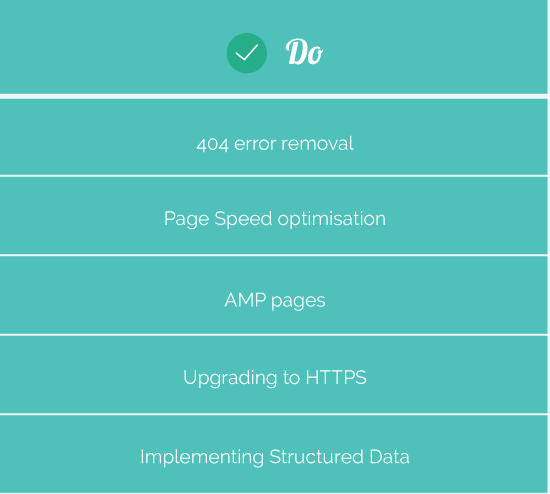2016 was in some ways a revolutionary year for SEO with plenty of potentially game-changing moments and releases. These developments call for marketers, such as yourself, to trim the fat on your SEO strategy and re-establish what the best use of your time is when executing this.
So what is in store for 2017?
2017 is the year of quality over quantity and guess what - it's more about the user than it ever has been.
Machine Learning
Perhaps the biggest advancement in 2016 is to do with the way Google ranks your content. It’s no secret that Google have been attempting to improve the relevance of their search results listings over the years - and this makes perfect sense considering that the better the SERP results, the more likely users will be using Google as their number 1 search engine (and the more revenue Google make).
With this in mind, in October 2015, Google released ‘RankBrain’ into the search algorithm - a machine learning system that helps to determine the most relevant results for a search request. Essentially, Google has developed a way to ‘adapt’ its algorithm (and therefore results) assigning different weighting to each ‘ranking factor’ depending on the ‘search intent.’
Confusing ay? In layman’s terms, it means that the algorithm is constantly changing, updating and evolving meaning that ranking factors are no longer fixed and rigid.
Does this mean there is no point in focussing on some areas over others? No. It just means that your SEO strategy will need to consider a wider range of ranking factors and pay much more attention to the content on your site. The job of an SEO is more difficult than ever before…
With this in mind, Reflect Digital look into what elements of your SEO strategy are still important in 2017, what ranking factors you should still concern yourself with and what practices you’ll need to ditch in 2017.
Technical SEO First
Despite the focus on users, achieving top positions in search engines is a tough task if the page is not optimised for both humans and search engines – easily accessible, easy to consume and optimised from a technical point of view.
This makes perfect sense because, once again, the user is actually a key consideration here. We’re yet to meet a website user who likes a slow loading, unsecured, unresponsive, difficult-to-use website. In the same way as there is no point in opening a Michelin star restaurant in the middle of the desert, there is no point in having excellent content on a site that nobody can access.
Therefore, continuing to improve your sites technical performance forms the basis of your strategy.
Latest Technical SEO Trends
So what are the latest trends in technical SEO? Google have been experimenting with a ‘mobile first’ index in another push towards a mobile future. Alongside this, Google continue to invest in improving AMP frameworks, a feature that looks set to stay for the long term. It's also proven that a ranking boost has been given to sites that have switched to HTTPS, with search metrics finding that ‘almost half of webpages in the top 10 now use https encryption.”
What’s more, structured data has been around for many years but it’s becoming more important in 2017. When you use structured data to mark up content, you help Google better understand its context for display in search, and you achieve better distribution of your content to users from search.
It's been estimated that Google is showing rich cards in 10% of search results which is quite a staggering number given the volume of searches Google receives! Can you implement structured data on your site?


Content Relevance
Content will continue to be the major ranking factor in 2017 with ‘relevance’ being the operative word. According to Searchmetrics “content is relevant when it provides answers to as many questions as possible, and when it deals with the most important aspects of a topic.”
Whilst using keywords in meta titles and other on-page elements is still important, the keyword itself is therefore no longer the decisive factor in determining the actual ranking for a search query.
So what does this mean for your site content? This means the best way to achieve ranking is to group related keywords together into one topical page to create content to answer questions comprehensively around your particular specialist topic. Marketers should be positioning their site as a ‘leading resource’ for their topics.
What’s more, the continued emergence of voice search and smart wear technology is all the more reason to focus on answering pressing questions that users are searching. The majority of voice search users are teenagers, however, this behaviour is expected to continue into adulthood, meaning optimising for voice search is a good way to ‘future proof’ your content.
Google RankBrain
So where does RankBrain come in? Engagement metrics and user signals such as time on site, bounce rate, click through rate etc continue to tell RankBrain how relevant and useful your content is to real users - so make sure these factors are considered.


Outreach and link building – Think Quality not quantity
Links still remain a very strong ranking factor in 2017, but as was the case in 2016, it’s about quality, not quantity. Turn your attention to what will get real users' interest and attention and think about what content is likely to get shares and likes. Focus your efforts in building links that are likely to get engaged and useful referral traffic to your site.
How about internal links?
Internal links continue to be one of the most important ranking factors, helping search engines and users to understand the context of a page. Why? Because internal linking helps users to navigate to additional information they will find useful.


Need help with getting your SEO strategy lean in 2017? Then you may be interested in our free 90 day tailored marketing plan.
























